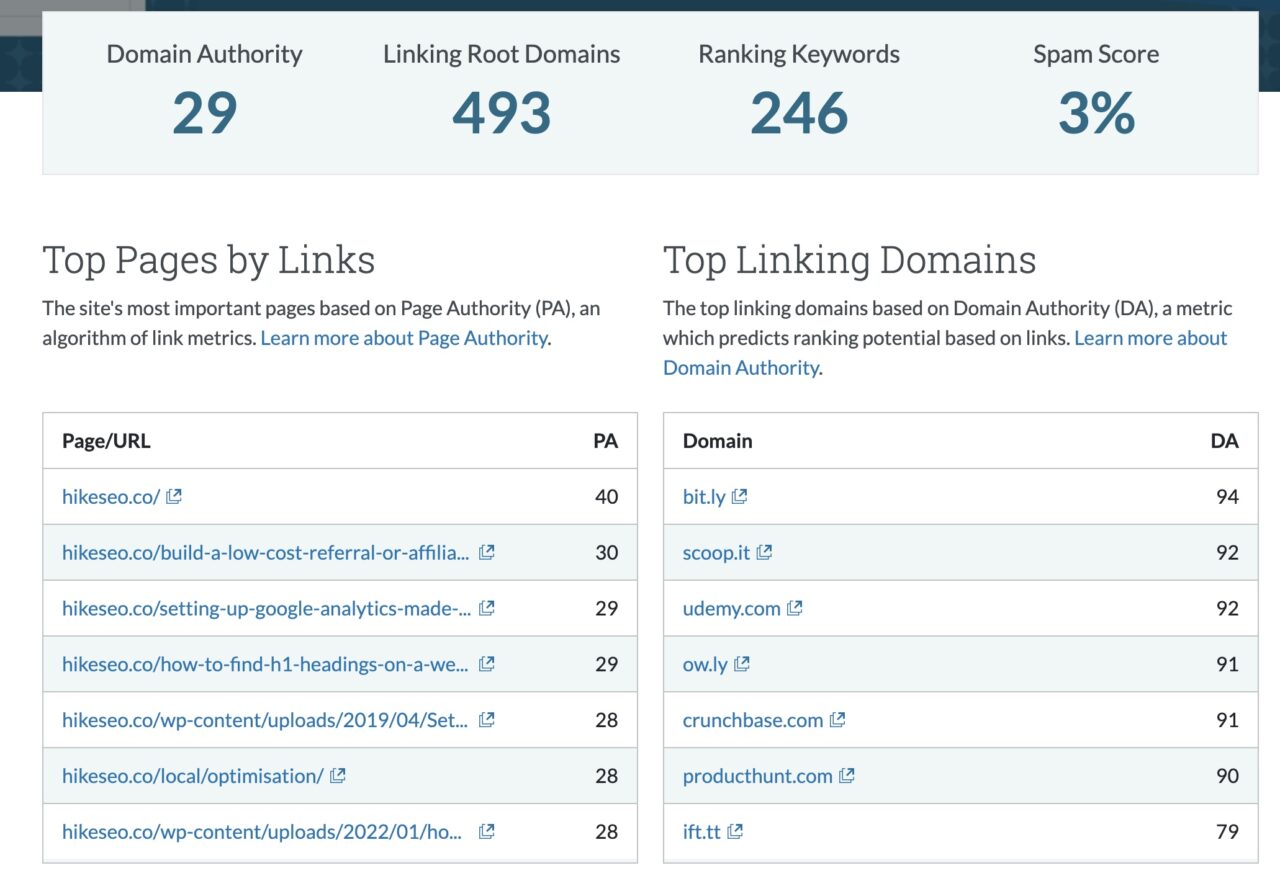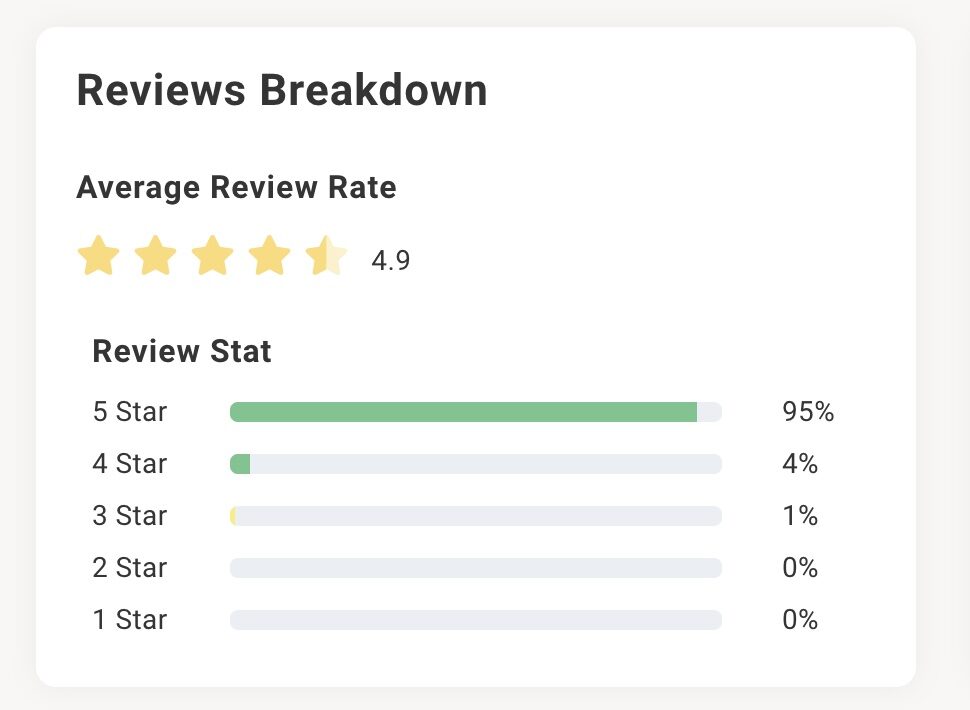Off-Page SEO Checklist for Beginners
What is Off-Page SEO?
Off-page SEO refers to the techniques and strategies that are utilized outside of a website to improve its search engine rankings and online visibility. This includes tactics such as link building, social media marketing, influencer outreach, and content marketing.
Off-page SEO is one of the three core most important areas to address in SEO, alongside On-site SEO and Technical SEO.
On-Page SEO vs. Off-Page SEO
These two SEO aspects both help with increasing the organic traffic & visibility of your website, but they have four distinct differences:
Focus
On-site SEO focuses on optimizing the website's content, structure, and technical aspects to make it more valuable to search engines, while off-page SEO focuses on building the website's reputation and authority through external factors like link building, social media marketing, and influencer outreach.
Control
On-site SEO is entirely within the control of the website owner, while off-page SEO is influenced by external factors and can be much more difficult to control.
Timeframe
On-site SEO can be implemented and optimized relatively quickly, while off-page SEO is an ongoing process that can take time to see results, especially if done naturally.
Impact
On-site SEO is typically considered to have a greater impact on the website's overall search engine performance, while off-page SEO can complement and enhance on-site efforts. Both on-site and off-page SEO is important for getting the most search visibility possible.
Why is Off-Page SEO Important?
The web is what it is because of the network that builds from links between related pages and sites, and so the foundational goal is how to attract links from other websites that recommend or reference your content.
Think of every link as a vote of confidence for the page or site that it’s linking to. The more links (votes) and the more powerful each link is (authority), the more credibility the page that is linked to acquires.
The more votes you collect from powerful domains, the more credibility your website will have.

Off-page SEO is fundamentally important as it provides methods to increase your website’s influence on the internet that signals to search engines how valuable your page or site is, thus affecting your rankings, visibility, and organic traffic.
Off-Page SEO Link Factors
Just as there are certain aspects search engines look for on a site, whether content or technical, there are many off-page factors that come into play that are important to be aware of when implementing various off-page strategies, that will be introduced later in this article.
Total Number of Linking Domains
A higher number of linking unique domains indicates that more websites consider the site to be a valuable resource, which can improve the site's reputation and authority in the eyes of search engines.
Total Number of Linking Pages
The more pages linking to a website indicates the diversity of a website's backlink profile. Having a high number of linking pages suggests that the website is being referenced by a range of different pages on other websites, which can signal to search engines that the site is a high-quality and authoritative resource.
Domain Authority of Linking Domains
Domain Authority (DA) is a metric developed by Moz that measures the overall reputation and authority of a website on a scale of 1 to 100. It is calculated based on a variety of factors, including the quality and quantity of inbound links, the age of the domain, and the overall quality of the website's content and user experience.
Also make sure to check out how Citation Flow and Trust Flow affect rankings.
You can see the DA for the Hike Website here alongside page authority and linking domains.

DA is important because it measures a website's overall reputation and authority from the perspective of search engines. Websites with higher Domain Authority are more likely to rank higher in search engine results pages, as they are seen as high-quality, authoritative sources of information within their niche or industry.
PageRank of Linking Page
PageRank is an algorithm developed by Google (named after Larry Page the co-founder of Google), that measures the importance of a web page based on the quality and quantity of links pointing to it. It is based on a scale of 0 to 10, with 10 being the highest possible score. PageRank was one of the earliest and most well-known metrics used to evaluate the authority and popularity of web pages.
While PageRank used to play a more crucial role in determining search engine rankings by identifying high-quality and authoritative pages, its significance has decreased over time due to the development of more sophisticated algorithms by search engines. However, it still is a factor being used today, as confirmed by Google reps such as Gary Illyes who said “DYK that after 18 years we're still using PageRank (and 100s of other signals) in ranking?”. It just is less significant than it used to be.
TrustRank of Linking Page
TrustRank is an algorithm developed by Stanford University researchers that evaluates the trustworthiness of web pages based on the quality and trustworthiness of the pages linking to them. It is designed to combat spam and identify high-quality, trustworthy pages on the internet.
By evaluating the trustworthiness of a page's backlink profile, TrustRank can help to ensure that only high-quality and trustworthy websites are rewarded with high search engine rankings. This means it’s important to receive links from websites that have a high TrustRank score.
Topic Relevance of Linking Page & Site
The more relevant a page or website is to the page or website it is linking to, the better quality a link is. In other words, try to secure links from websites and topics that relate closely to the industry your website is within and the topic your page is about. The closer the match, the better!
Age of Link
Links from older pages or domains are considered more authoritative than newer ones because they have had more time to establish trustworthiness. That being said, the quality and relevance of a backlink are ultimately more important than its age for SEO, but its age still plays a small factor.
Total Number of Links from Home Page
Because the home page tends to collect the most authority from other pages on the website, receiving a backlink from homepage content (not on the menu, sidebar, or footer), gives the receiving linked page a much greater boost in link equity than on other pages that may have lower page authority.
DoFollow vs. NoFollow Links
A link (by default) passes on the authority of the website and page, and what’s passed on to the page it is pointed to is known as “link juice” or link equity. These links are known as DoFollow links, and they are the more valuable types of links because they are a form of endorsement or reward from the linking website, essentially saying that your page or website is valuable and worth visiting.
The other type of link is a NoFollow link, which is determined by a rel=”nofollow” attribute in the link HTML code. This stops link juice from being passed on to the web page.
Here is an example of a NoFollow link within HTML code:

When building links, always aim to get DoFollow links, however, NoFollow links are still important and should be used to diversify your backlink portfolio (learn how to track backlinks here) so it appears natural as not every organic backlink will be DoFollow. NoFollows are valuable because they can generate traffic to your website. Therefore it’s good to have a balance between both DoFollow and NoFollow backlinks.
Link Type Diversity
It’s important to get a mix of different types of links - some text and others image links, so that it is natural, as others organically link both text and images to websites. Also, some users may prefer to click on image links, while others may prefer text links. By having both options, you can reach a wider audience and cater to different user preferences. By providing both text and image backlinks, it can improve the user experience by making it easier for users to navigate the website and find relevant content.
Contextual Links
Contextual links in SEO are links that are embedded within the body text of a webpage and are relevant to the content on the page. These are considered higher value to search engines than links within the sidebars, menus, or footer and they are important because they improve the relevance of the content and enhance the user experience by offering links to additional resources or information. Adding contextual links to your content can help to improve your website's visibility and ranking in search engine results.
Link Anchor Text
A link anchor text is text that is highlighted in the hyperlink and gives both users and search engines more context as to what the page that is linked to is about. Although you can use keywords within link anchor text to improve relevance, it’s important to not overdo this, so that’s where anchor text diversification comes into play. Sometimes when doing blogger outreach, this isn't always in your control, but try to guide the blog owner in what the most relevant anchor text should be.
Diversifying your anchor text means balancing the type of anchor texts between keyword-focused text, generic prompts (“click here to learn more”), longer anchor text, shorter anchor text, single words, and related terms (LSI or Latent Semantic Indexing keywords - e.g. if the linked page is about an apple, the anchor text may be “tasty red fruit”).
Other Off-Page SEO Elements
Although external links (backlinks) are very important to off-page SEO, other elements also contribute to factors that affect page and website rankings.
Reviews
Getting more reviews on your Google Business profile, especially positive ones, is a trust signal to other potential customers that can bring more organic traffic and conversions to your website or your physical store, thus boosting your SEO indirectly through the visits and engagement on your website and via location data.
Monitor and reply to your reviews through the local section within the platform.

Company Information
Including your company information on directories and your Google Business profile, it helps Google to identify it and see how your business has built a reputation if it’s been listed in multiple places online.
Videos
Videos, especially on YouTube, offer an opportunity to embed backlinks into the video description but also give search engines information about how popular your website is based on the views and engagement (comments) your videos have had. By embedding your video into your content, you can further improve context and engagement within your content.
Social Media Profiles & Audiences
The same goes with your social media profiles and audiences - they provide an opportunity to create backlinks but also indicate your audience size and engagement to other users and search engines. Posting relevant and valuable content will not only increase traffic to your website, but it will build trust and engagement with your audience to encourage them to come back over and over again.
Off-Page SEO Fundamentals
Before jumping full force into backlink building, it’s important to make sure the fundamentals are in place so your off-page SEO is effective.
Page Structuring
The structure of your pages on your website is important because they provide a hierarchy of how link juice coming from backlinks should flow and get distributed between them.
If you have your pages structured in a logical hierarchy, then the authority from backlinks pointing to the child pages can flow upwards to the parent pages, benefitting their page authority, and boosting their rankings.
However, if the page structure of your website is flat (1 level deep) then each page on its own will only collect so much page authority from backlinks and not benefit pages that may be targeting a more broad topic with a more competitive keyword phrase.
This is why having a topic hierarchy is so important to off-page SEO as it will affect how well your web pages rank as you acquire authoritative links.
Internal Linking
Along with well-structured pages comes internal linking which means making sure that pages are logically linked to one another based on where they are in the hierarchy and what page topics are related. Ideally, child pages always link up to their parent pages, and parent pages always link down to their child pages. Cross-linking between pages on the same hierarchy level also is important, especially when the topics relate to each other.
Off-Page SEO Backlinking Strategies
There are many powerful strategies to build natural backlinks to your website, which we’ve covered on our backlinking strategies page, so stay tuned and come back soon as the link will be included here once it’s live. Also check out our article about reciprocal links and how to use them safely.
Hike & Off-Page SEO
Off-Page SEO can be a challenge, but it’s much easier when using a platform like Hike which is catered for small businesses to make it simple. For local businesses, Hike has a whole suite of tools to optimize your Google Business profile. For all small businesses, Hike’s Backlinks section highlights backlink opportunities and backlink health. There’s even a tool that allows you to see opportunities from Journalists where you can get featured in their publications. Join Hike today and start improving your off-page SEO.